Conservation Groups Across the Bronx Continue to Grapple with the Impact of the Coronavirus
Despite cuts in funding the Natural Areas Conservancy and Bronx River Alliance are working to keep Bronx River conservation and restoration efforts alive amidst the pandemic
Conservation Groups Across the Bronx Continue to Grapple with the Impact of the Coronavirus
By Julia Eckley
It was almost 4 p.m. on a brisk November afternoon in Starlight Park. Michelle Ludke and her team carefully took one of their last water samples from the Bronx River for the day as plastic waste trailed along the river’s edge.
Ludke is the director of environmental stewardship for the Bronx River Alliance, an environmental protection organization dedicated to the conservation and restoration of the only freshwater river in New York City, running 23 miles long from the South Bronx to Valhalla and ending at the Kensico Reservoir.
“The water quality analysis that we’ve been doing is another one of our conservation efforts,” said Ludke, “We’ve been tracking pollution in terms of the sewage and the fecal pathogens and the bacteria that can get into the water.”
Standing on the dock, Ludke seemed confident and unfazed by the wind chill coming off the choppy river, though she had every reason to be worried. Conservation groups across the city have been grappling with funding cuts since the New York City Parks Department budget was cut by estimated 14 percent over the summer due to the impact of the coronavirus.
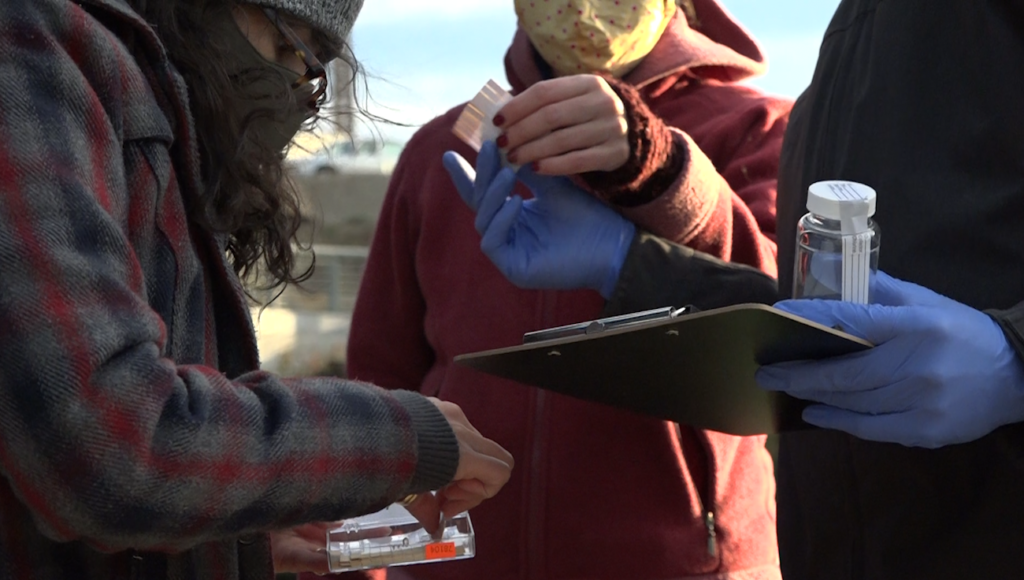
Ludke and Bronx River Alliance members conduct water testing
The cut has resulted in staff operating at a 45 percent reduced level compared to summer 2019. With the added clean-up and maintenance caused by increased visits to the park, environmental conservation groups are having to work to expand their trash clean up efforts, research projects, and educational programs with less staff and resources.
A public-private partnership, the Bronx River Alliance works closely with NYC Parks to conduct research on the river while also organizing conservation and restoration projects ranging from removing invasive plants and replanting native species to hosting hands-on educational programs for volunteers and school groups.
“The Bronx River Alliance is devoted to the protecting, improving and restoring of the Bronx River so that it can be a healthy amenity for all of the communities that live within the watershed,” said Ludke.
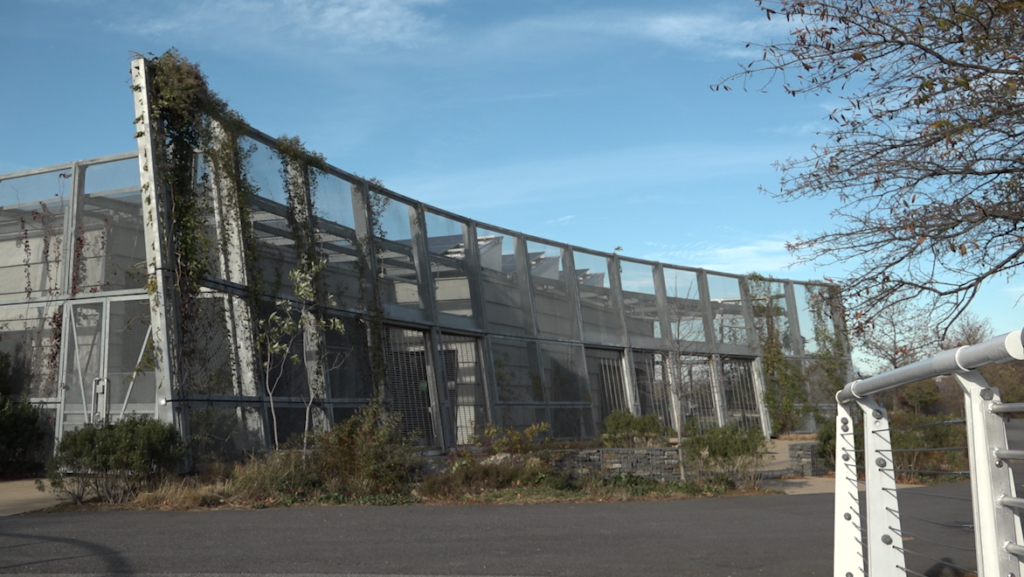
The Bronx River House
After 15 years without a river-accessible facility, the Bronx River House in Starlight Park was built for an estimated $13 million over the past decade, opening its doors in 2018.
“We’ve got a classroom, a multi-purpose room, a water quality lab, and excitingly we have a boat house where we’re able to take people out on the river and so they get to experience the beauty of the Bronx River themselves firsthand,” said Ludke, “Normally we have a lot more volunteers but because of COVID we want to keep our numbers low and keep people safe while they’re still helping us protect, restore, and improve the watershed.”
It will be some time before conservation organizations in the Bronx are able to fund essential infrastructure projects like the Bronx River House, considering the recent cuts made to the budget of the Parks Department.
The Bronx River Alliance is one of the groups included in the Conservancy Engagement Report for Bronx Park created by the Natural Areas Conservancy (NAC), a nonprofit organization working in collaboration with the NYC Parks and over 12 other park conservancies across the five boroughs. They developed a Forest Management Framework plan to maintain and restore forested parkland citywide over the next 25 years with an estimated cost of $385 million.
Helen Forgione, the senior ecologist for the NAC, worked on developing the Bronx Park report.
“We looked at the condition of the forest and this is all part of a forest management framework that covers 7,300 acres of forest in New York City and it’s a strategy for how over 25 years we can all work together to increase the health of forests,” Forgione said. “It gives information about the cost of doing restoration, of doing management, and of doing long term maintenance once the health of the forests is improved.”
The Bronx Park Conservancy Engagement Report was developed from the Forest Management Framework plan. It aims to create a partnership between the NAC, NYC Parks, Bronx River Alliance, the New York Botanical Garden, and the Wildlife Conservation Society’s Bronx Zoo in an effort to rehabilitate and protect Bronx Park starting with a 5 year plan.
In June 2019, the New York City Council allocated the Parks Department $4 million for implementation of first-year funding for the citywide Forest Management Framework, kick starting the environmental efforts in Bronx Park.
“Wonderfully the City Council funded its first year and we were able to work with the Parks Department and using that plan begin the management work,” said Forgione. “Hiring dozens of people, conducting forest management out in city parks… in an organized way, using the same tools, being able to monitor our progress and really you know kind of kicking it off.”
Jeremy Smith, a gardener with the Bronx Zoo Wildlife Conservation Society, has been working with the guidance of the NAC to rehabilitate areas of Bronx Park within the limits of the zoo, many of which are located between animal exhibits and not accessible to the public.
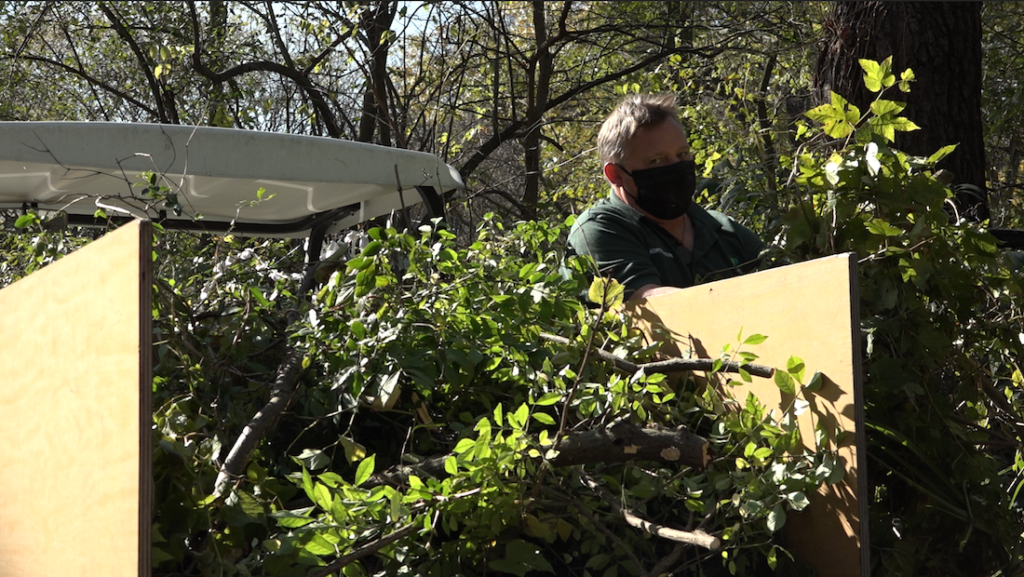
Bronx Zoo gardener at work
The NAC provided Bronx Zoo horticulture with training on conducting and documenting Rapid Site Assessments, a system of assessing and restoring forested areas through the removal of invasive species, replanting of native species, and reporting the assessment.
“They have given us tablets so when we’re out in the field doing RSA’s it’s all recorded,” said Smith. “We’ll record measurements, height and species that we see out there in the field and then later on we’ll input that into a database that’s centralized. All of our partners in Bronx Park can see that work being done and they can see the completion of it.”
Due to the economic fallout from COVID-19, the funding for the project is unable to be renewed, leaving the future of the five and 25-year plans uncertain. The zoo has already suffered financially from the coronavirus shutdown.
“The pandemic definitely put a little bit of a dent in our everyday process… a lot of the efforts with the conservation of natural areas and our partnership with Bronx Park, a lot of that work got kind of pushed to the side just a little bit cause everyone’s schedule has changed,” said Smith. “Protocol has been so tight and different. We’re focusing on most of our lifeline support which is our exhibits and our care for our plant life, for our animal collection that we have here at the park.”
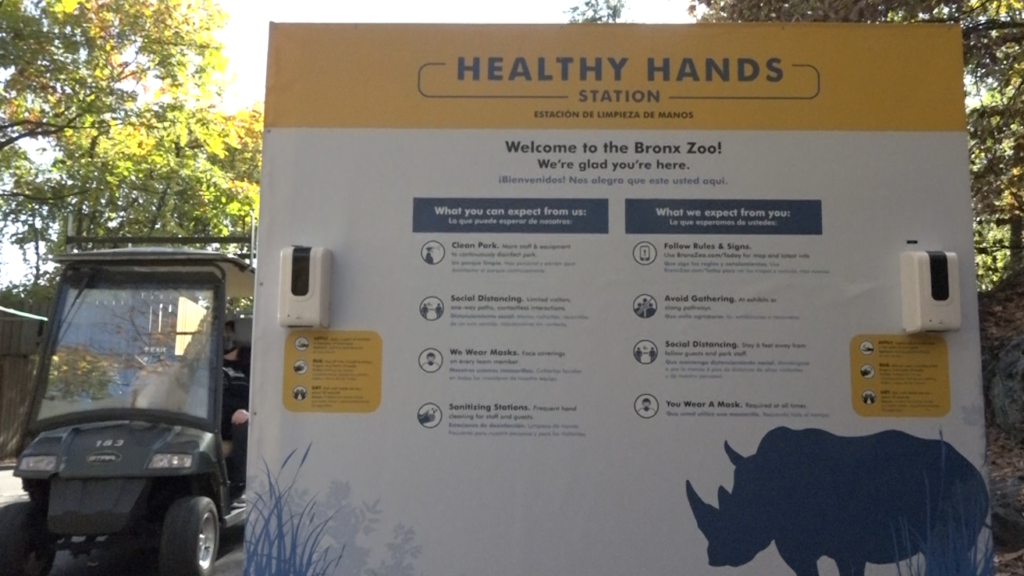
Hand sanitization station at the entrance of The Bronx Zoo
“Unfortunately you know a lot of us are suffering in all different sorts of ways with the COVID pandemic and one of the causality of that pandemic is a great loss in funding for New York City,” added Forgione..
In a social assessment conducted by the NAC. they asked: “‘Where do you go to experience nature? Where do you go to recreate?” and around 50 percent of their participants responded that they only used New York City parks.
There has been a notable increase in visitors as the coronavirus shutdown deepened the need to get outside and engage with nature. At one point, Mayor Bill de Blasio suggested NYC parks may need to limit capacity due to attendance increases reported by park staff.
“What we ended up seeing was our parks not only got used, they got abused and people weren’t being good stewards when they came out to the park. They would come out and they would bring all their party stuff and then they would leave it,” said Ludke, “They wouldn’t even put it in the garbage or recycle things properly they just sort of left it on picnic tables, they left it on the ground we saw a lot of PPE in the parks, we saw a lot of excess trash in the parks.”
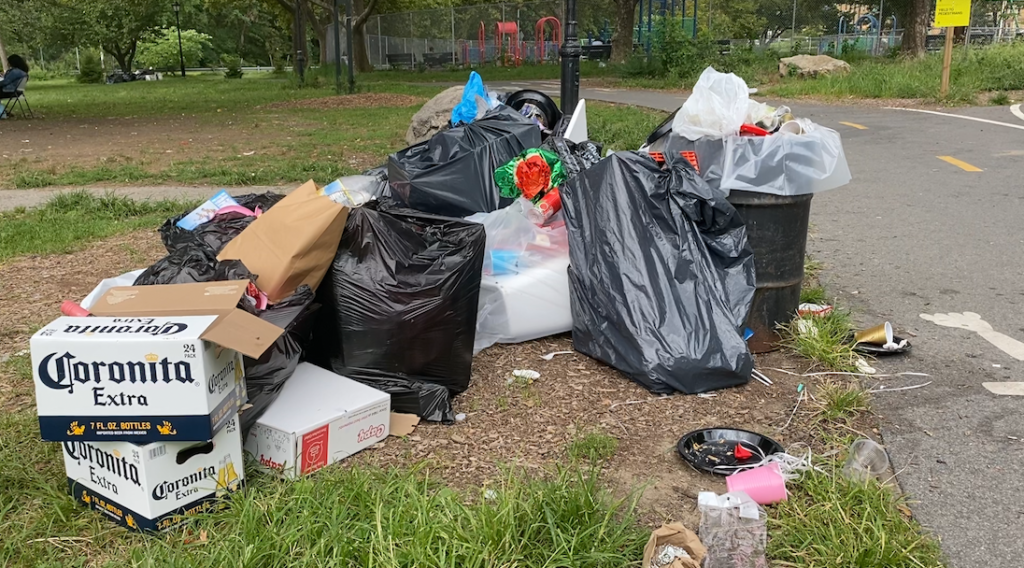
Garbage pile in Bronx Park
With the parks receiving over double the amount of normal visitation, they are in extra need of conservation projects, clean-ups, and public education programs just as funding these efforts is becoming much more difficult.
The Parks Department was slashed by $85 million, resulting in the inability to hire seasonal staff for the Van Cortlandt Park Alliance, a nonprofit dedicated to conservation efforts at Van Cortlandt Park, a 1,146-acre park located in the northwest Bronx.
“Typically the borough as a whole gets over 200 seasonal staff. I wanna say they got two this year and Van Cortlandt did not get one of those two people,” said Christina Taylor, the Director of Programs and Operations for the VCPA. “With the pandemic we completely shut down. We didn’t do anything in the spring so we lost what is typically our biggest volunteer season… a typical year we work with about 2,000 volunteers this year has not been typical.”
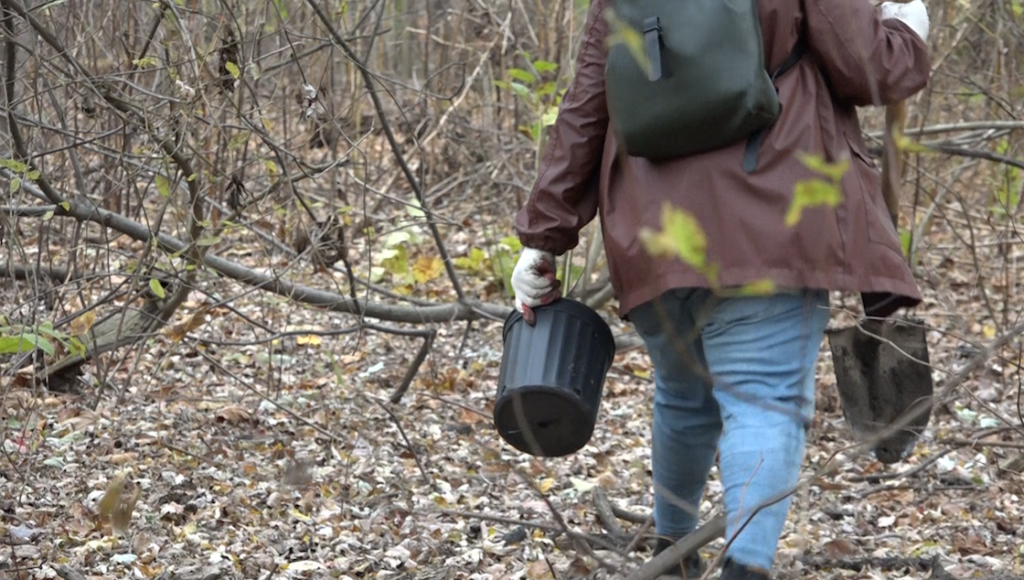
Volunteer at a Bronx Park tree planting
Despite the challenges of coronavirus restrictions and unexpected change in funding, Paulina A. Mohamed-Ocasio, the director of youth internships for the VCPA, was able to organize several summer programs for the community as well as specialized summer internships.
“We have two youth internships Garden to Market and Urban Eco Teens that really focuses on creating a sustainable and educating youth about creating a sustainable environment at a local level,” said Mohamed-Ocasio. “Applications went up, doubled for Garden to Market, same thing for Urban Eco Teens, so there was a need to like come out and work.”
Without proper funding, public educational opportunities for local youth are put at risk. Green spaces can deteriorate, which could have a detrimental, long-term impact on the natural plants and animals in the borough.
“To be completely honest I’m nervous about next year. As the budgets are becoming even tighter there’s certain things we haven’t been able to apply for this year that we typically would,” said Taylor. “We get discretionary funding from the City Council, that funding for this fiscal year was cut in half from last year and I’m expecting it to get cut more for FY21. So far we haven’t as the Alliance seen the budget cuts, but we know it’s coming.”
Despite the weight of uncertainty, there is also a sense that the coronavirus impact on the environment in the Bronx could have some positive outcomes.
“The pandemic has kind of brought to light how important it is to be in natural areas and how much solace a lot of New Yorkers have gotten from walking in the woods and discovering their local parks and natural areas,,” said Forgione. “We’re really looking at that as an opportunity to get these newly engaged New Yorkers into the parks and set up some very organized ways in which they can work toward management in natural spaces, where it’s safe, where their expertise would be valuable. Find some ways to really harness all that enthusiasm.”
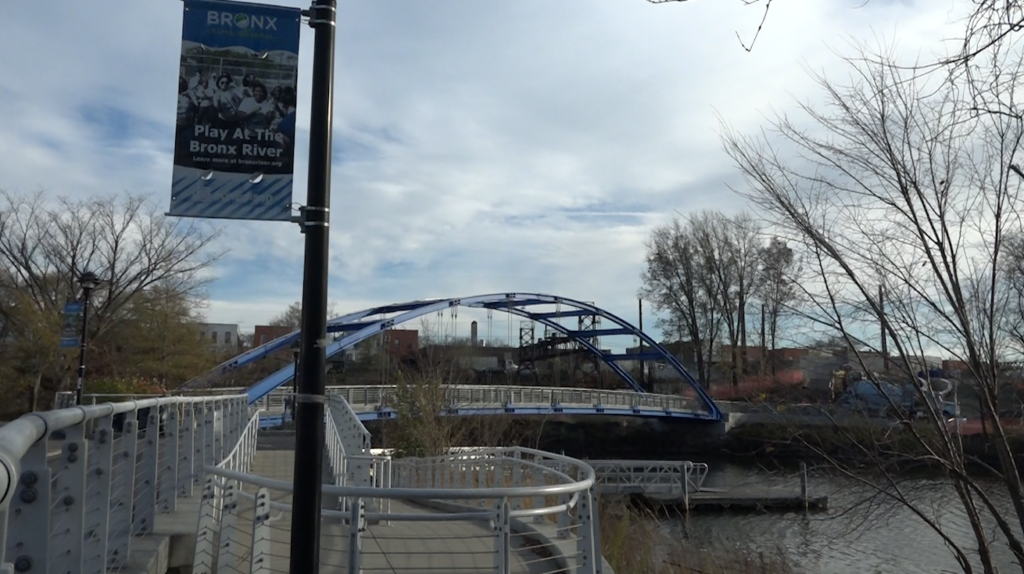
The Bronx River in Starlight Park